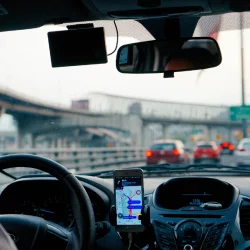How Traffic Trends Influence Car Accident Claims
Traffic trends, such as increased congestion, distracted driving, and evolving road designs, impact the frequency and nature of car accidents. These trends influence accident severity and injury types, affecting how claims are handled. Lawyers and insurers must adjust strategies to account for changing traffic patterns, ensuring fair compensation for victims.
In a fast-paced world with rapidly growing cities, the flow of traffic significantly affects our daily lives. As cities expand, the roads get busier. This increased traffic doesn't just make getting to work harder. It also plays a role in how car accidents are handled. Speaking to Adam M. Smallow, an attorney, can help you figure out the right way to move forward. Understanding how traffic patterns affect these incidents can benefit drivers and insurance experts in managing this situation.
Urbanization and Increased Traffic
City growth significantly impacts traffic flow dynamics as more people move to areas, resulting in congestion on roads and an increased risk of accidents due to the traffic volume and density. There is also a rise in insurance claims stemming from various types of accidents that demand extensive scrutiny and research, such as collisions involving multiple vehicles.
Fluctuating Weather Patterns
Weather affects traffic flow, and the number of accidents reported each day on the roads. Rainfall or snowfall combined with fog can make driving conditions dangerous due to visibility and slippery road surfaces. These weather-related incidents often result in claim situations for insurance adjusters, who have to take into account weather forecasts and road conditions when processing claims. This adds a layer of complexity to their job.
Recent Developments in Technology
The development of vehicle technologies has an impact on how people drive and handle insurance claims after accidents occur. These advancements include features such as cruise control and automated braking systems to lower the number of collisions that happen on the road. Because of these improvements in technology, there is a possibility for a decrease in accident rates, resulting in fewer claims being made. However, in cases where accidents do happen, technology can help determine who is at fault. Information gathered from sensors installed in vehicles and dashboard cameras plays a crucial role in assessing and processing insurance claims.
The Consequences of Driving While Distracted
Distracted driving is still a worry, as it raises the chances of accidents, especially these days due to smartphones and entertainment systems in cars that distract drivers easily. Claims following accidents caused by driving often lead to arguments about negligence. Proving distraction in cases usually involves providing evidence like phone records or statements from witnesses, making it tough to settle these claims.
The Impact of Economic Factors
Changes in the economy also significantly impact traffic flow patterns. When the economy is in a slump, people tend to travel to work, which decreases traffic congestion. On the other hand, during prosperity, there are more cars on the road, which escalates the risk of accidents. Insurance providers need to be flexible, as the frequency of claims often reflects trends. Recognizing this connection enables insurers to modify premiums and policies appropriately.
The Importance of Public Transport
Public transportation systems influence traffic patterns in a city. Cities with better public transit see fewer cars on the road, which can result in fewer accidents. As a result of this trend, the number of accident claims may go down. On the other hand, in places with inadequate public transportation options, roads tend to stay congested, which keeps accident rates high. Insurance companies need to take into account the availability of transit when they evaluate risks and determine insurance premiums.
The Rise of Ride-Sharing Services
The way people travel in cities has changed drastically because ride-sharing services are gaining popularity among individuals, which alters traffic flow patterns. Although this change could potentially lower the number of people using their vehicles for transportation purposes, it also brings about obstacles to overcome. When accidents involving ride-sharing vehicles occur, the claims process tends to be more complex and challenging. Identifying who is responsible in these situations often involves a legal examination as various parties, like drivers and ride-sharing companies, might have a share in the liability.
In Summary
Traffic patterns impact the number and complexity of car accident insurance claims. They are influenced by urbanization trends and rush hour congestion and further shaped by advancements and economic factors. Learning about these patterns helps drivers stay safe on the roads and enables insurance experts to process claims. Staying up to date with the evolving traffic scenarios is key for all parties involved in the realm of car insurance claims.
More to Read:
Previous Posts:










